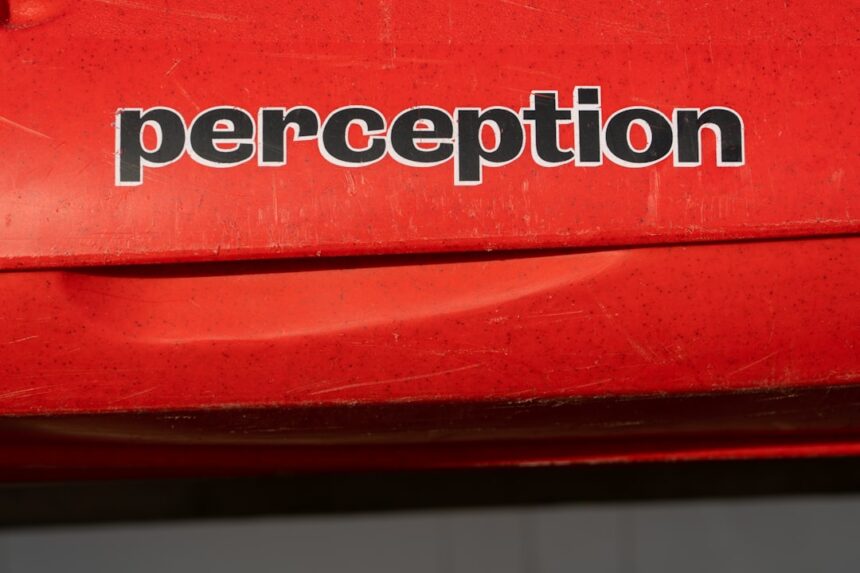When you think about the effects of trauma, you might picture vivid flashbacks or overwhelming anxiety. However, for many individuals grappling with Post-Traumatic Stress Disorder (PTSD), experiences of depersonalization and derealization can be equally distressing. Depersonalization refers to a feeling of detachment from oneself, as if you are observing your thoughts, feelings, or body from a distance.
Derealization, on the other hand, involves a sense of disconnection from the world around you, making it feel unreal or distorted. These phenomena can create a profound sense of confusion and isolation, complicating the already challenging landscape of PTSD. Understanding these experiences is crucial for anyone affected by PTSD.
You may find yourself questioning your reality or feeling as though you are merely a spectator in your own life. This can lead to a sense of helplessness and frustration, as you struggle to reconcile your internal experiences with the external world. The brain’s response to trauma can manifest in these dissociative symptoms as a protective mechanism, allowing you to distance yourself from overwhelming emotions or memories.
Recognizing that these feelings are common among those with PTSD can be the first step toward finding effective coping strategies and support.
Key Takeaways
- Depersonalization and derealization are common symptoms of PTSD, characterized by feeling detached from oneself and the surrounding environment.
- Studies show that depersonalization and derealization are prevalent in individuals with PTSD, affecting their daily functioning and quality of life.
- These symptoms can have a significant impact on daily functioning, including relationships, work, and overall well-being.
- Depersonalization and derealization are closely related to other PTSD symptoms, such as flashbacks, nightmares, and hypervigilance.
- Treatment for PTSD should address depersonalization and derealization, with a focus on coping strategies and long-term effects, as well as the intersection with comorbid mental health conditions.
The Prevalence of Depersonalization and Derealization in PTSD
Research indicates that depersonalization and derealization are not uncommon among individuals with PTSD. Studies suggest that anywhere from 30% to 70% of those diagnosed with PTSD experience some form of dissociation, including these two specific symptoms. This prevalence highlights the importance of understanding how these experiences intertwine with the broader spectrum of PTSD symptoms.
If you are among those who experience these feelings, it is essential to know that you are not alone in your struggle. The prevalence of these symptoms can vary based on several factors, including the nature of the trauma experienced and individual differences in coping mechanisms. For instance, those who have endured prolonged trauma, such as childhood abuse or combat exposure, may be more likely to experience depersonalization and derealization.
Understanding the prevalence of these symptoms can help normalize your experiences and encourage you to seek help. It also underscores the need for mental health professionals to be aware of these symptoms when diagnosing and treating PTSD.
The Impact of Depersonalization and Derealization on Daily Functioning

Living with depersonalization and derealization can significantly impact your daily life. You may find it challenging to engage in routine activities or maintain relationships due to the disconnection you feel from yourself and your surroundings. Simple tasks like going to work, socializing with friends, or even enjoying hobbies can become daunting when you feel detached from reality.
This disconnection can lead to feelings of frustration and inadequacy, as you may struggle to understand why you cannot simply “snap out of it.” Moreover, the impact on your emotional well-being can be profound. You might experience heightened anxiety or depression as a result of feeling disconnected from your own identity and the world around you. This emotional turmoil can create a vicious cycle, where the more you try to fight against these feelings, the more entrenched they become.
Recognizing how depersonalization and derealization affect your daily functioning is crucial for developing effective coping strategies and seeking appropriate support.
The Relationship Between Depersonalization, Derealization, and Other PTSD Symptoms
| PTSD Symptom | Percentage of Patients |
|---|---|
| Depersonalization | 60% |
| Derealization | 45% |
| Flashbacks | 70% |
| Nightmares | 80% |
Depersonalization and derealization do not exist in isolation; they often coexist with other symptoms of PTSD, such as intrusive memories, hyperarousal, and avoidance behaviors. You may find that when your PTSD symptoms flare up, so too do feelings of detachment and unreality. This interconnectedness can complicate your healing journey, as it may be challenging to differentiate between which symptoms are driving your distress at any given moment.
Understanding this relationship is vital for both you and your mental health provider. It can inform treatment approaches that address not only the dissociative symptoms but also the underlying trauma that contributes to them. By recognizing how these symptoms interact, you can work towards a more comprehensive understanding of your experiences and develop strategies that target multiple facets of your PTSD.
The Role of Depersonalization and Derealization in PTSD Treatment
Incorporating an understanding of depersonalization and derealization into PTSD treatment is essential for effective recovery. Traditional therapeutic approaches may not always address these dissociative symptoms directly, which can leave you feeling misunderstood or unsupported. It is crucial for therapists to recognize the presence of these symptoms and tailor their interventions accordingly.
Cognitive-behavioral therapy (CBT) is one approach that has shown promise in addressing dissociative symptoms within the context of PTSD treatment. By helping you identify negative thought patterns and develop healthier coping mechanisms, CBT can provide tools to manage feelings of detachment and unreality. Additionally, grounding techniques—such as mindfulness practices—can help anchor you in the present moment, reducing the intensity of depersonalization and derealization experiences.
Coping Strategies for Managing Depersonalization and Derealization in PTSD

Finding effective coping strategies is essential for managing depersonalization and derealization in the context of PTSD. One approach is grounding techniques, which can help you reconnect with your body and surroundings when feelings of detachment arise. Simple practices like focusing on your breath, engaging your senses by noticing textures or sounds around you, or even holding onto a comforting object can help bring you back to the present moment.
Another strategy involves journaling or expressive writing. By putting your thoughts and feelings into words, you may find clarity and a sense of control over your experiences. This practice can also serve as a valuable tool for tracking triggers or patterns related to your dissociative symptoms, allowing you to better understand what exacerbates them.
Engaging in creative outlets—such as art or music—can also provide an avenue for expression that bypasses verbal communication, helping you process complex emotions associated with trauma.
The Long-Term Effects of Depersonalization and Derealization in PTSD
The long-term effects of depersonalization and derealization in individuals with PTSD can be profound and far-reaching. Over time, persistent feelings of detachment may lead to chronic difficulties in forming relationships or maintaining a sense of identity. You might find yourself struggling with self-esteem issues or feeling disconnected from your own life story, which can hinder personal growth and fulfillment.
Additionally, prolonged experiences of depersonalization and derealization may contribute to the development of other mental health conditions, such as depression or anxiety disorders. The ongoing struggle with these symptoms can create a cycle of distress that perpetuates feelings of isolation and hopelessness. Recognizing the potential long-term effects is crucial for seeking timely intervention and support.
The Intersection of Depersonalization, Derealization, and Comorbid Mental Health Conditions
Many individuals with PTSD also experience comorbid mental health conditions that can exacerbate feelings of depersonalization and derealization.
If you find yourself dealing with multiple mental health issues simultaneously, it is essential to understand how they interact.
For instance, heightened anxiety may trigger episodes of depersonalization or derealization as a way for your mind to cope with overwhelming stressors. Conversely, feelings of detachment may lead to increased social withdrawal or avoidance behaviors that contribute to depressive symptoms. Addressing these comorbid conditions alongside PTSD is vital for achieving holistic healing and improving overall well-being.
Recognizing and Addressing Depersonalization and Derealization in PTSD
Recognizing depersonalization and derealization as valid experiences within the context of PTSD is crucial for both individuals affected by these symptoms and their support networks. If you are experiencing these feelings, it is important to acknowledge them rather than dismiss them as mere stress responses. Validating your experiences can empower you to seek help and advocate for yourself in therapeutic settings.
Addressing these symptoms requires open communication with mental health professionals who understand their significance within the broader framework of PTSD treatment. You deserve a treatment plan that considers all aspects of your experience, including dissociative symptoms. By actively participating in your healing journey and advocating for comprehensive care, you can work towards reclaiming a sense of agency over your life.
The Importance of Education and Awareness in Addressing Depersonalization and Derealization in PTSD
Education and awareness play pivotal roles in addressing depersonalization and derealization within the context of PTSD. By increasing understanding among mental health professionals, individuals affected by these symptoms can receive more accurate diagnoses and tailored treatment plans. Furthermore, raising awareness within communities can help reduce stigma surrounding mental health issues, encouraging more people to seek help without fear of judgment.
You can contribute to this awareness by sharing your experiences or advocating for educational initiatives that focus on dissociative symptoms in trauma survivors. By fostering open conversations about depersonalization and derealization, we can create a more supportive environment for those navigating the complexities of PTSD.
Moving Forward: Advocating for Improved Support and Resources for Individuals with Depersonalization and Derealization in PTSD
As you navigate the challenges posed by depersonalization and derealization in PTSD, advocating for improved support systems is essential for fostering healing within yourself and others facing similar struggles. This advocacy can take many forms—whether it involves pushing for better training among mental health professionals regarding dissociative symptoms or supporting organizations that provide resources for trauma survivors. By sharing your story or participating in community initiatives focused on mental health awareness, you contribute to a collective effort aimed at improving understanding and resources available for individuals experiencing depersonalization and derealization in PTSD.
Together, we can work towards creating a more compassionate society that recognizes the complexities of trauma recovery while providing meaningful support for those affected by it. In conclusion, understanding depersonalization and derealization within the context of PTSD is vital for fostering healing and resilience among those affected by trauma. By recognizing their prevalence, impact on daily functioning, relationship with other symptoms, role in treatment approaches, coping strategies available, long-term effects, intersection with comorbid conditions, importance of recognition, education efforts needed, and advocacy for improved resources—individuals like yourself can take significant steps toward reclaiming agency over their lives amidst the challenges posed by these dissociative experiences.
In exploring the complex relationship between depersonalization, derealization, and PTSD, it’s essential to consider various perspectives and research findings. An insightful article on this topic can be found on Unplugged Psych, which delves into the nuances of how these dissociative symptoms manifest in individuals with PTSD. The article provides a comprehensive overview of the psychological mechanisms at play and offers valuable insights into therapeutic approaches. For a deeper understanding, you can read more about it on their website by visiting this link.
LEARN MORE About Unmasking the Mysteries Behind Depersonalization and Derealization
FAQs
What is depersonalization and derealization in PTSD?
Depersonalization and derealization are dissociative symptoms that can occur in individuals with post-traumatic stress disorder (PTSD). Depersonalization involves feeling detached from oneself, as if one’s thoughts, feelings, and sensations are not real or belong to someone else. Derealization involves feeling detached from the external world, as if one’s surroundings are unreal or distorted.
What are the causes of depersonalization and derealization in PTSD?
Depersonalization and derealization in PTSD are thought to be caused by the brain’s response to trauma. When an individual experiences a traumatic event, the brain may use dissociation as a defense mechanism to protect the individual from overwhelming emotions and sensations associated with the trauma.
What are the symptoms of depersonalization and derealization in PTSD?
Symptoms of depersonalization and derealization in PTSD may include feeling disconnected from one’s body or emotions, feeling like an outside observer of one’s thoughts and actions, feeling like the world is unreal or distorted, and experiencing a sense of detachment from one’s surroundings.
How are depersonalization and derealization in PTSD diagnosed?
Depersonalization and derealization in PTSD are typically diagnosed through a thorough assessment by a mental health professional, such as a psychiatrist or psychologist. The assessment may involve a detailed discussion of the individual’s symptoms, experiences, and history of trauma.
What are the treatment options for depersonalization and derealization in PTSD?
Treatment for depersonalization and derealization in PTSD may include psychotherapy, such as cognitive-behavioral therapy (CBT) or eye movement desensitization and reprocessing (EMDR), to address the underlying trauma and associated symptoms. Medications, such as antidepressants or anti-anxiety medications, may also be prescribed to help manage symptoms. It is important for individuals to seek professional help for an accurate diagnosis and appropriate treatment plan.




